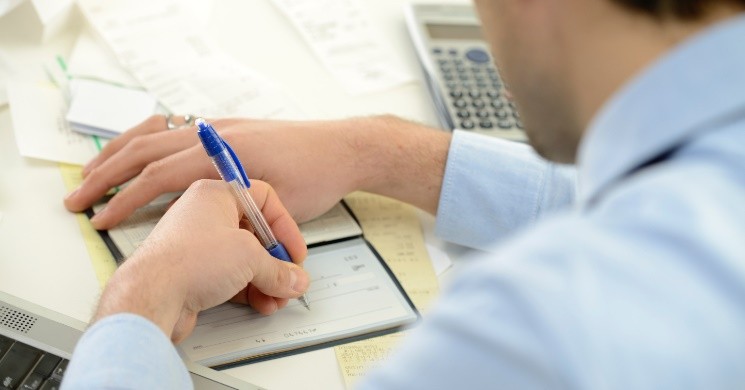- Voided checks have several uses, including receiving a direct deposit from an employer, paying via ACH and remedying mistakes.
- The three main steps to voiding a check include using the correct writing implement, writing on the check and disposing of the check.
- Be aware of a few important safety security considerations when voiding a check to keep your account information and personal details safe and hidden from fraudsters.
Although you may only associate voided checks with remedying mistakes on a physical check, voided checks can be valuable for a variety of reasons, including setting up direct deposit and automatic payments with a financial institution or credit union.
Knowing how to void a check correctly, as well as the common situations in which you may do so, can ensure your bank account is safe and secure and put you on track for efficient banking, both as the payer and as the payee.
First: Why void a check?
You may want to use a voided check for several reasons.
First, you might want to void a check if you make a mistake while writing it. This may include writing down the wrong amount or making it out to the wrong person. You can void a check for any incorrect information and then rewrite it on a new check.
Another frequent reason is to set up direct deposit. In a common example, many employers will ask for a voided check to initiate direct deposit. This will provide them with your bank account number, routing number and financial institution, all of which they will need to establish the connection to your account on their side. A voided check enables them to see this information, without using the check as a method of payment itself.
Similarly, you may be asked to submit a voided check for automated clearing house (ACH) transfers, such as bill and loan payments. This is especially the case when setting up automatic recurring payments.
| Other Ways to Set Up Direct Deposit |
|
It's possible to establish direct deposit without voiding a physical check. It's important to note, however, that your employer or other parties may not always accept all of these alternatives.
If you choose not to use a voided physical check, you will want to check in with the other party to see what alternatives they accept. |
Steps to voiding a check
Voiding a check is a fairly straightforward process. Follow these three main steps to void a physical check.
- Find a blue or black pen. Sometimes, an alternative color pen may not show up correctly, or may not be accepted by the other party.
- Write “VOID” across the front of the check in large letters, making sure to avoid covering the account number and routing number at the bottom of the check. Depending on why you're voiding it, the check will either be blank (when setting up direct deposit, ACH payments, etc.) or filled out (if you have just made a mobile deposit, have made a mistake when composing, etc.). If the latter, make sure the VOID marking covers the check number, amount and recipient.
- Dispose of the voided check. Consider keeping a photocopy in your records if you believe you’ll need it for future reference.
Disposing of a voided check
You may want to dispose of a voided check, in lieu of holding onto it, for several reasons. While you may have taken the right steps to void the check, it still contains sensitive information (such as the account holder’s name, financial institution, address and account number) that can be used by fraudsters.
For extra security, consider using a paper shredder, since using one makes it difficult to piece the check back together to reveal sensitive information. If you don’t have access to a paper shredder, you can rip up the check into several pieces, being sure that the sensitive information is not intact when you dispose of it.
Safety considerations for voided checks
Using paper checks can be risky, because of the sensitive banking information they contain, which could be dangerous in the wrong hands. Once you’ve voided a check, try to ensure it's either disposed of or kept safely with other sensitive files.
Ultimately, voided checks can come in handy in many situations. Knowing the right method to void a check, as well as the security steps to protect yourself, can help make payment — both as a recipient and as a payee — more efficient.




